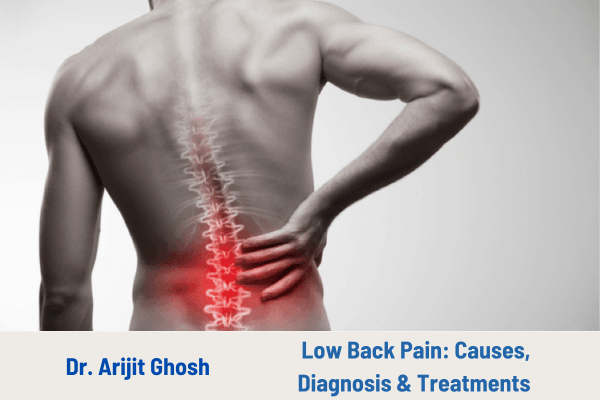Renowned Orthopedic Surgeon in Kolkata Lower back pain is a common condition that affects millions of people worldwide. It can range from mild aches to severe pain that affects daily activities. In this blog, we will discuss the symptoms, diagnosis, and treatment of lower back pain.
Symptoms The symptoms of lower back pain vary from person to person. Some common symptoms include:
- Dull or sharp pain in the lower back
- Stiffness or aching sensation in the lower back
- Pain that radiates to the legs, buttocks, or hips
- Numbness or tingling in the legs
- Difficulty standing up straight or walking
- Weakness in the legs or feet
Diagnosis The diagnosis of lower back pain involves a physical examination and diagnostic tests. The doctor will ask about your medical history, the duration and severity of the pain, and any other symptoms you may have. They may also perform a physical exam to assess your range of motion and reflexes.
Diagnostic tests such as X-rays, CT scans, or MRI may also be ordered to identify the cause of the lower back pain. These tests can identify any fractures, herniated discs, or other underlying conditions that may be causing the pain.
Treatment The treatment of lower back pain depends on the severity and cause of the pain. Some common treatment options include:
- Pain Management: Over-the-counter pain medications such as acetaminophen or non-steroidal anti-inflammatory drugs (NSAIDs) can help relieve pain and inflammation. In some cases, prescription pain medication may be necessary.
- Physical Therapy: A physical therapist can help design an exercise plan that can help relieve pain and improve range of motion. Strengthening exercises for the back, core muscles, and legs can help prevent future injuries.
- Injections: In some cases, corticosteroid injections can help reduce inflammation and pain. These injections can be given directly into the affected area.
- Surgery: Surgery is rarely needed for lower back pain, but in some cases, it may be necessary to relieve pressure on the nerves or spinal cord.
Prevention Prevention is key when it comes to lower back pain. Some preventive measures include:
- Maintaining a healthy weight
- Regular exercise, including stretching and strength training
- Using proper posture when sitting or standing
- Avoiding heavy lifting or twisting of the back
- Quitting smoking, as can weaken the muscles and increase the risk of back pain.
In conclusion, lower back pain can be a debilitating condition, but with proper treatment and preventive measures, it can be managed effectively. If you experience any symptoms of lower back pain, it is essential to seek medical attention to receive an accurate diagnosis and appropriate treatment.
